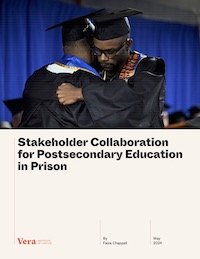By Hanna Hernandez, & Vasiliki Georgoulas-Sherry
Rates of recidivism have been commonly used as a key measure for public safety and in assessing the effectiveness of the criminal justice system – sentencing, jails, prisons, community supervision, treatment, and reentry programming. There is continued interest in tracking recidivism rates beyond a three-year follow-up. Tracking long-term recidivism can provide information for supporting incarcerated individuals and promoting their success in reintegrating into the community following a prison sentence. To evaluate long-term recidivism rates in Washington, the Washington Statistical Analysis Center (SAC) applied for and received the 2021 State Justice Statistics (SJS) grant from the Bureau of Justice Statistics (BJS). Under this grant from BJS, the SAC will draw on publicly available data from the Washington State Department of Corrections (WADOC) to evaluate the long-term recidivism trends of incarcerated individuals released from prison. Background Across the U.S., individuals are being incarcerated in jails and prisons, as many as 11 million times each year. While over 50% of the nation’s incarcerated population is housed in prisons, a little under a third (27%) are housed in local jails, and about a fifth (17%) are housed in juvenile facilities, federal facilities, territorial prisons or other detention facilities (Loeffler et al., 2022; Western et al., 2022). While these rates of incarceration showcase issues surrounding overall mass incarceration, these statistics do not highlight the consistent and pervasive changes within the prison populations. According to the Bureau of Justice Statistics (BJS), in 2019, the U.S. incarceration rate decreased to the lowest rate since 1995. However, despite this rate in decline, the U.S. still incarcerates a bigger percentage of its population compared to any other country. Most recently, 2022 has shown a 2% increase in population as compared to the 2021 rates – this increase made the 1% decline reported in 2021 non-existent, and most historically, highlighted the first increase in rates in both federal and state prison populations within the last decade; it is important to note COVID-19 impacts might have significantly reduced this population (Martyn et al., 2022; Nowotny et al., 2021). According to the BJS (2023), “at yearend 2022, an estimated 32% of sentenced state and federal prisoners were black; 31% were white; 23% were Hispanic; 2% were American Indian or Alaska Native; and 1% were Asian, Native Hawaiian, or Other Pacific Islander” (5). Similarly, pandemic impacts might have significantly impacted these findings – for example, as pretrial populations were almost back to full pre-pandemic populations – more than two-thirds of this population had not been convicted of a crime. Another reason could be due to many jurisdictions reducing their use of prison incarceration.
Olympia, WA: Washington State Statistical Analysis Center, 2024. 33p.




















